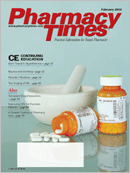It's Time for Education on Rx Drug Abuse
One of the first clues that prescriptiondrug abuse was permeatingAmerica's youth camefrom the 2003 household survey statisticsfrom the Substance Abuse and MentalHealth Services Administration. Thesestatistics showed a significant rise in thenonmedical use of pharmaceuticals byjuveniles aged 12 through 17 years.
A December 2005 Associated Pressreport indicated that 9.5% of high schoolseniors had recreationally used hydrocodone,the most abused prescriptiondrug in this country. This abuse of a prescriptiondrug is happening at the sametime that illicit drug usage among teensis seeing a modest decline.
Over most of my past 38 years in lawenforcement, prescription drug abuseamong the nation's young people has notbeen a significant problem. One of thereasons has always been their inability toparticipate in "doctor shopping"withoutthe consent and assistance of a parent orguardian. Therefore, because they couldnot get prescriptions on their own, forgingand altering prescriptions was not anoption either.
What has changed significantly in theprescription drug abuse arena is thatthere are even more lucrative ways ofobtaining illegal pharmaceuticals thanthe conventional diversion methods.These drug-diversion pathways includeillegal Internet sales and street salesthrough international smuggling andpharmacy robbery and burglaries. Insome states, teenagers can work insidepharmacies, where their access to thesedrugs is tremendous.
The other source is the teen's ownmedicine cabinet, or that of a chronicpain patient relative, who deservedly hassignificant amounts of prescription painkillersand is not likely to miss a few pillsthat will be used by the teen to get high.The overall prescribing of prescriptionopiates and benzodiazepines hasincreased significantly in the past severalyears, making these drugs more availableto diversion due to sheer numbers.
A December 2005 New York Times articlewritten by Howard Markel, MD, a professorof pediatrics at the University ofMichigan, indicates that some of theimproper use and diversion of prescriptiondrugs is due to irresponsible prescribingby physicians. He cites an incidentwith one of his teenage patientswho underwent a routine tonsillectomyand was prescribed 80 controlled-releaseoxycodone tablets for her pain.
Dr. Markel says that, in addition to prescribingsuch a high-powered pain relieverto this patient, the doctor nevernoticed that her medical chart detailedan extensive history of substance abuse.The patient's mother finally took awaythe last 20 pills after realizing that herdaughter had consumed 75% of thetablets in a short time.
Regardless of the source, it seems tobe obvious that it is time for the government,drug abuse coalitions, and otherinterested organizations to spend muchmore of their resources on tackling thisproblem among the country's youth.Direct education of this age group shouldbegin in the latter elementary schoolyears and should continue all throughhigh school.
Of course, the parents and teachers ofthese children also need to be educatedon the potential problem of prescriptiondrug abuse among their kids. Parents,like the general population, have longthought that pharmaceutical abuse is nota real drug problem. It is time to wake upand realize that one's children and grandchildrenare being subjected to this additionaltemptation, and whatever stepsare needed should be taken to try tokeep it in check.
John Burke, commander ofthe Warren County, Ohio,drug task force and retiredcommander of the CincinnatiPolice PharmaceuticalDiversion Squad, is a 38-yearveteran of law enforcement.Cmdr Burke also is the currentpresident of theNational Association of Drug DiversionInvestigators. For information, he can bereached by e-mail at burke@choice.net, viathe Web site www.rxdiversion.com, or byphone at 513-336-0070.

